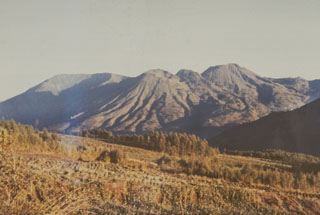Report on Dieng Volcanic Complex (Indonesia) — 28 June-4 July 2017
Smithsonian Institution / US Geological Survey
Weekly Volcanic Activity Report, 28 June-4 July 2017
Managing Editor: Sally Sennert.
Please cite this report as:
Global Volcanism Program, 2017. Report on Dieng Volcanic Complex (Indonesia) (Sennert, S, ed.). Weekly Volcanic Activity Report, 28 June-4 July 2017. Smithsonian Institution and US Geological Survey.
Dieng Volcanic Complex
Indonesia
7.2°S, 109.879°E; summit elev. 2565 m
All times are local (unless otherwise noted)
BNPB reported that a phreatic eruption at the Sileri Crater lake (Dieng Volcanic Complex) occurred at 1154 on 2 July, ejecting mud and material 150 m high, and 50 m to the N and S. The event injured 11 of 18 tourists that were near the crater. According to a news article a helicopter on the way to help evacuated people after the event crashed, killing all eight people (four crewmen and four rescuers) on board.
PVMBG scientists visited the next day and observed weak white emissions rising 60 m. The report noted other events during the recent past; an event at 1303 on 30 April ejected material 10 m high and 1 m past the crater edge that formed a 1-2 mm thick deposit, and an emission at 0941 on 24 May consisting of gas and black “smoke” that rose 20 m. The Alert Level remained at 1 (on a scale of 1-4) and PVMBG warned the public not to approach Sileri Crater within a 100-m radius.
Geological Summary. The Dieng plateau in the highlands of central Java is renowned both for the variety of its volcanic scenery and as a sacred area housing Java's oldest Hindu temples, dating back to the 9th century CE. The Dieng Volcanic Complex consists of multiple stratovolcanoes and more than 20 small Pleistocene-to-Holocene craters and cones over a 6 x 14 km area. Prahu stratovolcano was truncated by a large Pleistocene caldera, which was subsequently filled by a series of cones, lava domes, and craters, many containing lakes. Lava flows cover much of the plateau, but observed activity has been restricted to minor phreatic eruptions. Gas emissions are a hazard at several craters and have caused fatalities. There are abundant thermal features and high heat flow across the area.
Sources: Badan Nacional Penanggulangan Bencana (BNPB), Pusat Vulkanologi dan Mitigasi Bencana Geologi (PVMBG, also known as CVGHM), ABC News - American Broadcasting Corporation, Associated Press

